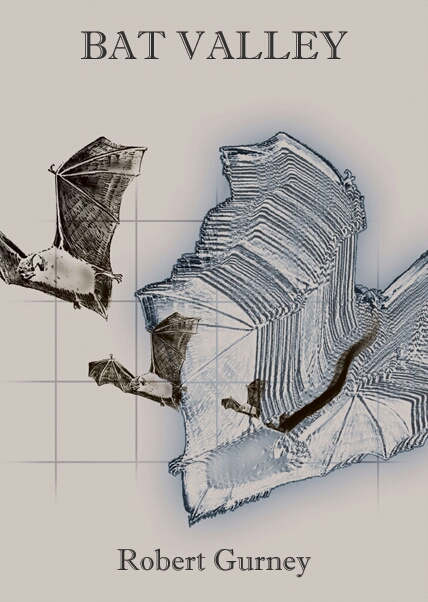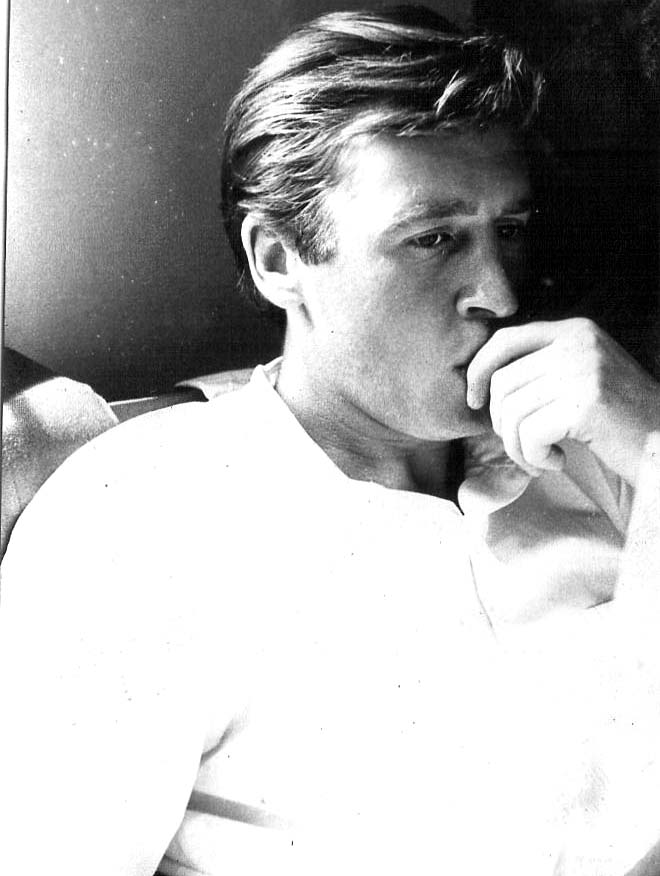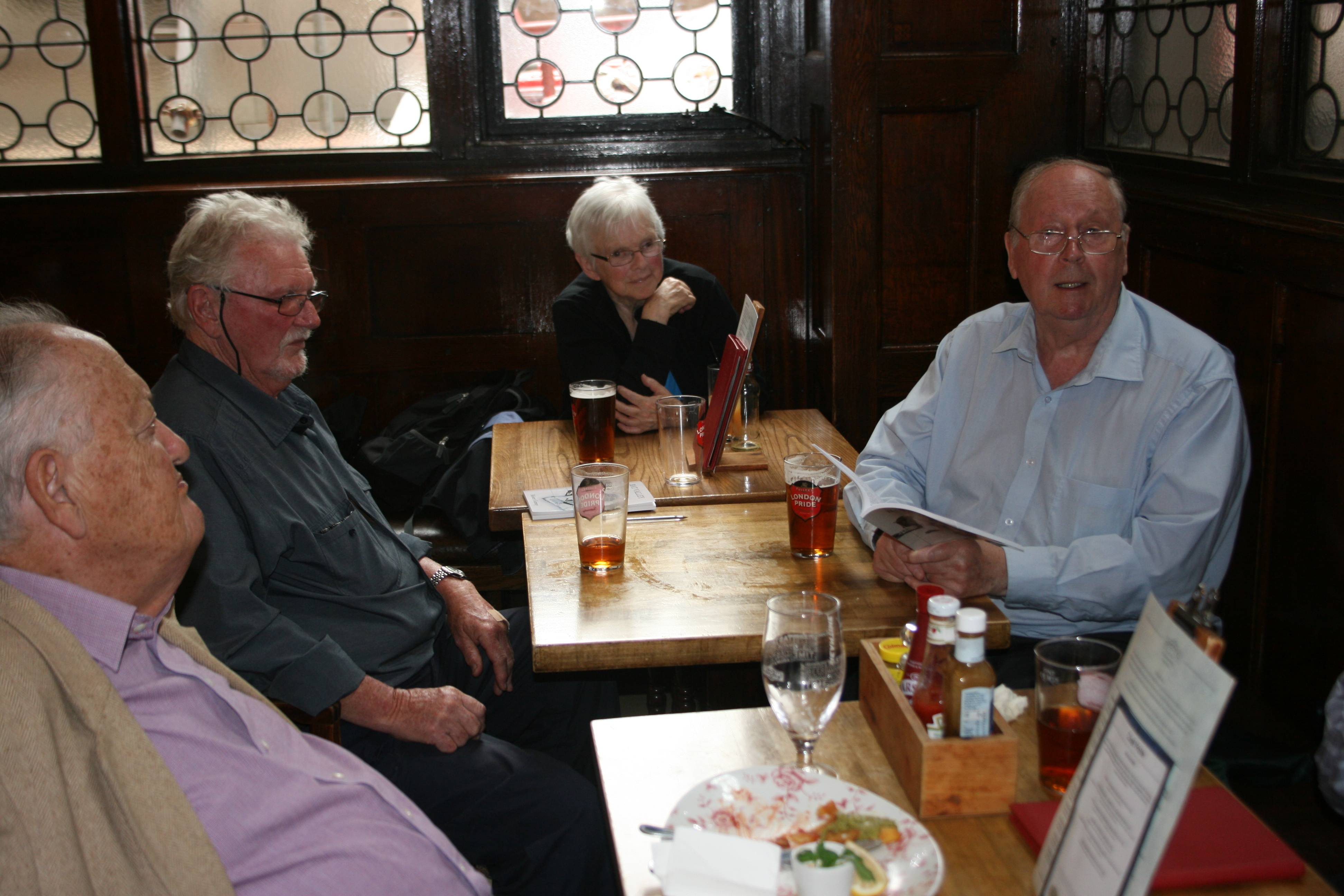Anne Theroux: 2018
The Bat Valley Stories are weird, as you warned me, but provide some wonderful glimpses of life in Africa – and life in general, in all its grim absurdity. I took my time reading them as I’m not altogether comfortable with surrealism but have just polished off the last three, all of which are superb.
Anne was part of the aid programme in Africa in which I also worked in the 1960s.
On Bat Valley: “Your work is intriguing and original …”. Rogers Coleridge and White Literary Agency, London, September 2017.
Bat Valley And Other Strange African Animal Stories, Llyfrau Cambria Books, Llandeilo, 2017, ISBN 978-1-9997416-0-0. 111 pages. Ebook ISBN 978-1-9997416-1-7.
Google: Gurney Bat Valley Amazon. (Inc. Kindle version)
Cover image: William Gurney.
Print versions: https://www.cambriabooks.co.uk/portfolio/bat-valley/
Back cover:
The author in 1965.
This photograph was taken by David Smith in Professor Eric Todd’s house on the Makerere Campus in Kampala. Professor Cecil Todd was Head of Makerere School of Art. David, now retired, was Senior Lecturer in History and Head of Academic Studies at Bexley College. Professor Todd had a one-eyed parrot called Polyphemus!
Bat Valley is the name of an imaginary university in Kampala.
Bat Valley was launched in London on 7 September, 2017. The launch, which was quite well attended, took place in The Coal Hole in the Strand. The author signed copies. Below is a shot of the author reading one of the stories: ‘The Spider Man of Gulu’. Text of ‘The Spider Man’ below.
Dr Clive Mann
The Spider Man of Gulu
You probably won’t know what to make of this story. It is, I admit, odd. Does it have a moral? I think it does but I’ll leave it to you to work out.
She was a strange girl. Her father had a flourmill on the side of the Thames to the east of London. He also owned a major UK newspaper.
I met her in Africa. She didn’t seem to like ‘Europeans’, even though she was one herself. I couldn’t get to the bottom of it. She surrounded herself mainly with African politicians and academics.
She even had an unofficial ‘bodyguard’, an African- American poet, who took it upon himself to be the gatekeeper at her parties. If your face didn’t fit, he would literally put out his arm to stop you going in. He did this with a smile that was friendly but also sinister. This was galling because she was a neighbour and a close friend of a close African friend of mine but that’s by the by.
I couldn’t work it out. Anyway, I came to terms with it. It takes all types. Rumour had it that she was up to her neck in something. I didn’t believe it.
I knew that she had a problem: she was an acute arachnophobe.
Her parents had a small mansion that they used as a weekend retreat in St Albans. It was situated next to a former silk mill down by the river in the park. The factory went bust some time after the war. That’s when they bought the house.
Now, St Albans has the reputation of being the ‘City of Spiders’. They are everywhere, especially down by the Ver. Goodness knows when they came in. Some blame the Romans, others the Normans. Some say they are left over from the silk mill days. They say that certain spiders produced a silky thread that was used by the mill owner. I don’t know. All I know is that Kate, Kate Lyle, kept her bedroom windows tightly shut to prevent ‘unwelcome guests’ from getting in.
She was literally terrified of the critters. Things came to a head when she was sanding the floor of the loft in the huge barn that she was converting into a studio for her art work. The barn had originally been the stables. A spider with a body the size of a mouse ran across in front of her. Her screams could be heard in the garden of The Fighting Cocks pub on nearby Abbey Mill Lane.
Kate’s parents realised that something had to be done. A doctor had told them that it may have had something to do with her mother’s extreme possessiveness. Another said that a fear of spiders could be linked to an anxiety about getting pregnant.
Both of her parents were neurotic about Kate’s boyfriends, suspecting all of them of being gold-diggers. She was simply not allowed to develop a normal relationship with boys of her own or of any other background. Her father was behind this overprotectiveness – he had nieces who had been bitten badly by fortune hunters – but he left it to his wife to quiz Kate on whom she was seeing. This she did constantly.
Over dinner one day, a guest was telling the family that he had spent years in Uganda and had not seen a single spider. He had a theory that they must have been heavily predated. Mr Lyle wondered if the spiders of St Albans were under-predated. There are simply no predators in St Albans – no geckos, no chameleons, no snakes to hoover them up. Only a few bats.
On the spur of the moment, Kate sat up and said, “That’s it. I want to go and live in that country, a place where there are no spiders!”
Reluctantly her parents agreed, her father pulled a few strings and, lo and behold, Kate received a letter asking her to join the Art Department at Bat Valley. Behind the scenes her father had oiled the wheels by secretly donating a huge sum of money to the university.
It had been decided that Kate had to face down her demons. Her father had rang the head of Art saying that he felt it could be good for Kate if she tackled her phobia head on. Could she be encouraged to create giant spiders out of papier maché or something like that? The department went one better. With their coffers overflowing, they approached the department of Artificial Intelligence with an idea for a joint project. The head of AI agreed.
Kate took up her post. It involved almost no contact with students. She was classed as a researcher. Under Dr Opio’s supervision she set about creating robotic spiders. She called them ‘spibots’.
She studied photographs of coconut spiders. Some were as big as a dog. Her first creation had a battery in it that was operated by a hand-held remote. She got the idea from her younger brother’s remote control beach buggy. She herself had loved playing with it in the car park on the seafront in Port Eynon where her family owned a huge seaside house.
She would often be seen taking her ‘coco-spibot’ for walks around the roads of the university. As you can imagine, it caused a sensation. Kate enjoyed the attention.
She went on to bigger things. She found out that gigantic spiders had once, in the nineteenth century, been reported as living on the edge of Lake Victoria. There were astonishing tales about their vast nets.
She had heard rumours that much bigger spiders could be found in the Congo. She studied everything she could lay her hands on about them. She absorbed as much data as she could, including arguments against the possibility of such creatures having ever existed: the larger a spider gets, the heavier its exoskeleton becomes, rendering the animal incapable of movement. Nevertheless, she found the reports convincing. They hadn’t been seen recently, she said, because they had retreated further into the forest, escaping from Man.
Her inventions became bigger and bigger. Eventually, after an awkward incident with a soldier in the city centre, she was asked by Dr Opio to take her ‘spigots’ for walks in the university’s football stadium when it wasn’t being used. This she did.
Kate was beginning to feel more positive towards spiders. She felt she was overcoming her phobia at last. The ‘treatment’, she believed, was working.
She told the pro-vice chancellor. He beamed. She asked if she could create huge spider statues, in the style of Louise Bourgeois, and display them around the grounds. He agreed. After all, she represented an income stream. Her creations were becoming famous and, on balance, as talking points they enhanced the university’s profile. Bat Valley joined the Tourist Trail.
Fired by this success, Kate went one step further. She wanted to make a spider that would climb over a building. It was agreed. The day of the launch arrived. Guests were seated in rows in front of the main building. Kate pressed the button. An enormous spider appeared on the roof. It began to climb down the facade of the building. There were screams. Chairs were overturned. People scattered in every direction at the fearful sight. Kate was called in.
She was told that she had ‘cool it’ for a while. She didn’t mind. The therapy had apparently worked. She felt that she had overcome her arachnophobia, despite the fact that she had not confronted a real spider once during her time in Kampala, either on campus or in and around her flat on Nakasero Hill. She emailed her parents to tell them she thought she was better and that she was going to take a holiday.
Now, her brother had worked on an aid programme in Uganda and had formed a network of friends dotted around the country. The custom was that you could just turn up, out of the blue, at anybody’s house and expect to be put up and wined and dined. He told her he thought it was good that she was going to take a break.
He suggested that she visit a friend of his in Gulu. It was a long way from Kampala. Privately he felt it would be a good test for his sister. He had stayed with Peter himself and had had quite an experience.
Kate set off in her Saab. The car ate up the miles. It was getting dark when she arrived at Peter’s house in a remote area outside Gulu. Owls were hooting. Crickets were chattering. He politely asked her in. Jokingly he recited some words from Mary Howitt’s poem ‘The Spider and the Fly’:
“Will you walk into my parlour?” said the Spider to the Fly, ‘Tis the prettiest little parlour that ever you did spy;
The way into my parlour is up a winding stair,
And I’ve a many curious things to whew when you are there.”
Kate knew the poem well. She replied with a laugh:
“Oh no, no,” said the little Fly, “to ask me is in vain,
For who goes up your winding stair can ne’er come down again.”
Peter, Peter Southwood, had lived in Uganda for years. He was single. He had prepared a meal for her, a curry with delicious fruit side dishes. She was very grateful but began to have odd feelings about Peter. He wore thick-lensed glasses that exaggerated the size of his eyes. It gave the impression he was staring at her, without blinking. For a fleeting moment, they reminded Kate of the two prominent, glistening beady eyes of the six-eyed Jumping Spider. She dismissed the thought as a throw-back to the condition she had overcome.
“I’ll show you to your room now,” Peter said. He led Kate across to the other side of his bungalow.
“I’ll leave you to it,” he said, opening the door but not going in.
Kate went in. She was so tired she simply collapsed on the bed fully clothed. She was too tired to undress. She lay there enjoying the feeling of sleep coming over her. She sat up with a start.
“What was that?” she whispered.
She could hear tiny noises. Slowly she turned her eyes to the area around the bed. Dozens of spiders were leaping up and down all around the bed, some reaching tremendous heights. The shock was so great she passed out.
The following morning, Peter entered the room. He went over to the bed and closed Kate’s eyes. He placed a sheet over her, covering her head.
“Joshua!” he called. Joshua was the ageing gentleman who had prepared the curry. He had worked for Peter for many years.
“Joshua! Fetch the trolley.”
……………………………..
On my first two “Africa” books:
Annie Davison (UK) on my Absurd Tales from Africa (2017): “The beauty of these tales lies in the wonderful pictures created in my imagination. The humour arises when life goes wrong for people in serious situations, a bit like John Cleese in the immensely watchable Fawlty Towers.”
Colin Townsend (Canada) on A Night in Buganda (2014): “An extraordinary book – unlike any other I have read … stories brought together with a poet’s flair for language … they will have you laughing, crying or perhaps just wondering.”
Niall Herriot (writer, Ireland) on A Night in Buganda: “It’s a brilliant piece of writing” and on Absurd Tales from Africa: “I enjoyed Absurd Tales, not only for the zany humour and the wildly imaginative scenarios but also how the characters and settings for the stories reminded me so vividly of those times.”
Chris Jones, publisher, Llyfrau Cambria Books, Wales: “They are far more than humorous tales.”
Paul Cant, writer, Ireland and Africa: “Congrats Bob. Superb Cover … Promising contents… ” Paul Cant is Jonathan Bower, author of African Aftermath.
Author’s Statement
In Africa so many of the people I met had obsessions. In all fairness, many of them were doing MAs, MScs and PhDs. Such activities involve being obsessive. I later became obsessed with the work of a Spanish poet (PhD thesis).
I knew one person who was obsessed with the ears on some insects’ legs. Another was heavily into shoes. Sugar, tobacco, beer, banks, cotton, coffee, copper, birds, honey, flies, parasites: I suppose it was inevitable that these and many other topics would fill academics’ thoughts back then.
I was obsessed then with unusual cars. You could pick them up for next to nothing from departing expats. The obsession almost bankrupted me.
Perhaps it was the nature of the times. East Africa needed specialists in this and that. It’s just that everybody seemed to have his or her own hobby horse.
Bat Valley taps into the general atmosphere of the obsessiveness that was prevalent in Kampala back then, in the sixties.
The stories told describe passions, phobias, compulsions, enthusiasms that centre on spiders, bats, snakes, chickens, crocodiles, cranes, gorillas, lungfish, owls, moths, butterflies, geckos, cockroaches, hippos, frogs, mosquitoes, chameleons, geckos, buffaloes and warthogs.
The Stories
INTRODUCTION 1 The Okello’s Camper Van Man 4 The Gecko Man of Lugard’s Fort 9 The Old Man and The Stride 16 The Buffalo Men of Akagera 21 The Beautiful Butterfly People of Kanyawara 25 The Chameleon of Buntuntumula 31 The Chicken Man of Mbarara 38 The Crane Lady of Mperwerwe 41 The Crocodilophile of Mukusu Island 45 The Herpetologist of Nabajuzzi Swamp 49 The Gorilla Man of Bwindi 52 The Gower Hippo Boy 56 The Jaguar Men of Kiziba 61 The Lungfish Man of Mbazi 63 The Mount Elgon Waiter 66 The Moth Lady of Tororo 69 The Kampala Shopping Mall Ostrich Man 73 The Owl Man of Mukono 77 The Bat Valley University Mantis Man 81 The Snake Lady of Nakasero 86 The Spider Man of Gulu 92 The Congolese Warthog Man 98 Bat Valley 102
INTRODUCTION
The first story, ‘The Okello’s Camper Van Man’, tells the poignant tale of a dying Englishman kept alive by an abandoned Ugandan orphan.
The second, ‘The Gecko Man of Lugard’s Fort’, explores the relationship between an English academic who has fallen on hard times in Uganda and the Tutsi refugee who cares for him.
‘The Old Man and The Stride’ is a dialogue between a visiting academic and a strange local gentleman. It takes place in a park in Kampala in front of a statue that represents the future of the Commonwealth.
‘The Buffalo Men of Akagera’ describes the relationship between an American, part First Nation, and an Englishman. It describes their common interest, the buffalo, and their violent end.
‘The Beautiful Butterfly People of Kanyawara’ reports on a comic academic conference, financed by the European Union, held at Bat Valley University in Kampala.
The protagonist in ‘The Chameleon of Buntuntumula’ experiences an illumination one day on coming face to face with a chameleon. As a result, he develops a new theory of education for a developing nation, one that gets him into some trouble.
‘The Chicken Man of Mbarara’ describes the trials and tribulations, the frustrations and failures that beset an African American intent on returning to the land of his fathers.
‘The Crane Lady of Mperwerwe’ follows the adventures of an eccentric young Englishwoman who gets carried away by her research and forms a strange relationship with a Crested Crane.
‘The Crocodilophile of Mukusa Island’ traces the progress of a man’s obsession with crocodiles, one that lands him in trouble with the law.
‘The Herpetologist of Nabajuzzi Swamp’ is the sad story of a man so obsessed with frogs he becomes totally isolated from other human beings.
‘The Gorilla Man of Bwindi’ is a cautionary tale in which the reader is asked to contemplate the fate of a man who attempts to swindle a charity out of money in order to fulfil an African dream.
‘The Gower Hippo Boy’ accompanies a Welsh academic, as he travels down the Nile researching hippopotami, eventually meeting his maker, trampled to death, on the shores of Lake Victoria.
The object of desire at the heart of ‘The Jaguar Men of Kiziba’ is the last King of Rwanda’s Jaguar Mk5 coupé. Based on a true story, it includes Princess Margaret’s state visit to Uganda. The main character’s weakness, envy, leads to a dramatic ending.
‘The Lungfish Man of Mbazi’ has a relatively happy dénouement. It involves a research programme at Bat Valley linked to space exploration that almost ends in disaster for the researcher.
‘The Mount Elgon Waiter’ culminates, in a Fawlty Towers- like scene in a tourist hotel, in a reference to witchcraft.
‘The Moth Lady of Tororo’ finds an ageing British lawyer almost falling for a glamorous young post-grad student in a swimming pool situated in a hotel near the Uganda-Kenya border.
‘The Kampala Shopping Mall Ostrich Man’ examines the disgraceful behaviour of a married Lothario.
‘The Owl Man of Mukuno’ is a dark tale involving an Englishman, his Mugandan wife and his mother-in-law.
‘The Bat Valley University Praying Mantis Man’ delves deeply into a work by the surrealist artist M.C. Escher: ‘Dream’. ‘The Snake Lady of Nakasero’ involves a man’s deep fear of snakes, his efforts to overcome it, a doomed relationship and a fatal snakebite suffered during curfew.
A fear of spiders is the subject of ‘The Spider Man of Gulu’. It features the spoiled daughter of a member of the British Establishment who overcomes her fear only to meet an unexpected end in the north of Uganda.
‘The Congolese Warthog Man’ relates how a man from Katanga, turning his back on the ivory trade, learns how to love a warthog.
Finally, ‘Bat Valley’ tells the story of a man whose all- consuming interest in bats leads to near-disaster.




